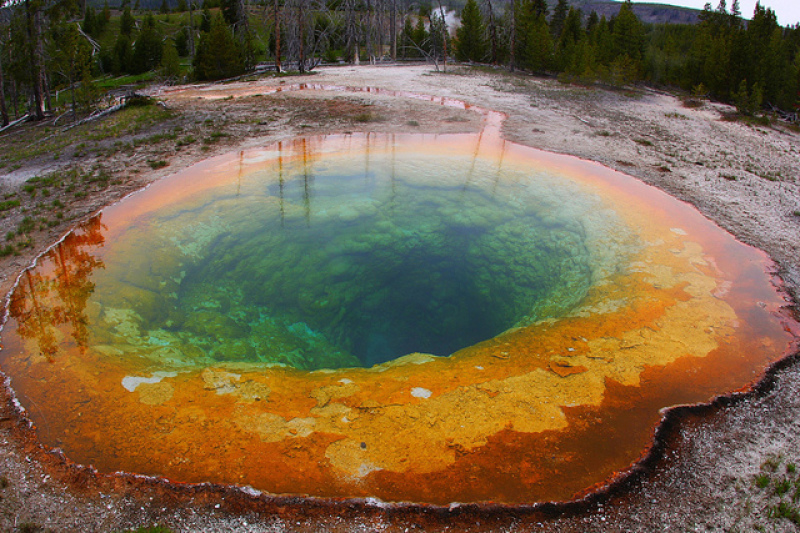
Yellowstone National Park has always been a camper's paradise. But the wonderland is currently in a bad condition.
One of the park's main attractions, its hot springs, are contaminated. According to reports, Abyss, Morning Glory, Sapphire, Emerald, and Grand Prismatic have changed colors due to contamination brought about by trash and coins that were thrown in the hot springs.
In the late 1800s, these hot springs had a deep blue color; today, it has a variety of colors, from orange to gold and green, which is one of the main reasons why tourists visit Yellowstone National Park. The varying colors are lovely to look at.
Based on a recent study performed by Brandenburg University for Applied Sciences in Germany and Montana State University, the change in Morning Glory's color was brought about by aforementioned contaminants. The team utilized a mathematical model for the study.
"What we were able to show is that you really don't have to get terribly complex -- you can explain some very beautiful things with relatively simple models," Joseph Shaw, Montana State University Director and Professor said.
Shaw, along with fellow researchers Michael Vollmer and Paul Nugent led the research on the famed hot springs in Yellowstone National Park.
Vollmer admitted that when they started the research, it was all just for fun. But when they saw what they are about to unfold, things got more serious.
The researchers were able to simulate how the hot springs looked, specifically the Morning Glory, more than a century ago and in the 1940s, when its water was still deep blue. During this time, the water temperature was much warmer compared to how it is now. The change in color is a significant sign that there has been a change in microbes living in the waters as well as the microbial mats.
"There are people at my university who are world experts in the biological side of what's going on in the pools. They're looking for ways to monitor changes in the biology -- when the biology changes, that causes color changes -- so we're actually looking at possibilities of collaborating in the future," Shaw explains.


















